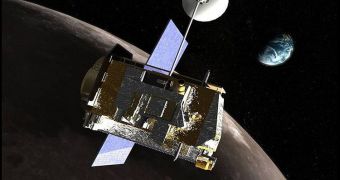In a paper published in a recent online issue of the American Geophysical Union's Journal of Geophysical Research, experts explain how the color and chemistry of lunar dust and ice are constantly being changed by cosmic rays bombarding the Moon's surface.
The process is taking place around the clock, although it does register some ups and downs. The changes these particles instill are fundamental, the new study demonstrates. This work may help refine theoretical models of the lunar environment.
This may come in handy when space agencies will attempt to send astronauts to Earth's natural satellite again. NASA, the China National Space Administration (CNSA) and the Russian Federal Space Agency (RosCosmos) all have plans of going to the Moon within the next couple of decades.
Measurements of cosmic ray intensity were recently collected by the NASA Lunar Reconnaissance orbiter, which has specialized instruments capable of detecting these high-energy particles.
The main implication of the new research is that cosmic rays can lead to the release of oxygen, when they impact ice. The chemical then goes on to bind to carbon, in order to form prebiotic organic molecules that are of extreme interest to astrobiologists.
In addition, the study also sheds more light on the nature of these rays, which are believed to be among the most serious threats to the health of astronauts during prolonged space missions. It is currently estimated that a trip to Mars would take at least 18 months, using current technologies.
“Our validated models will be able to answer the question of how hazardous the space environment is and could be during these high-energy radiation events, and the ability to do this is absolutely necessary for any manned space exploration beyond low-Earth orbit,” Nathan Schwadron explains.
The expert holds an appointment as a physicist at the University of New Hampshire. He explains that these radiations are largely made up of protons, electrons, and charged nuclei, all belonging to common chemical elements, Space reports.
The new measurements were collected by the Cosmic Ray Telescope for the Effects of Radiation (CRaTER) instrument aboard LRO, whose primary function is to analyze the biological impacts that the lunar radiation environment may cause on astronauts.
“This has provided us with a unique opportunity because we’ve never made these types of measurements before over an extended period of time, which means we’ve never been able to validate our models,” Schwadron adds.
“Now we can put this whole modeling field on more solid footing and project GCR dose rates from the present period back through time when different interplanetary conditions prevailed,” he concludes.

 14 DAY TRIAL //
14 DAY TRIAL //